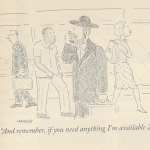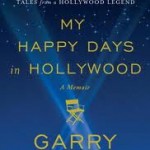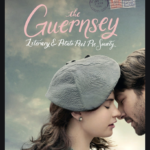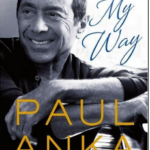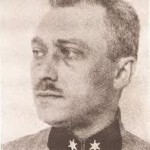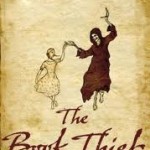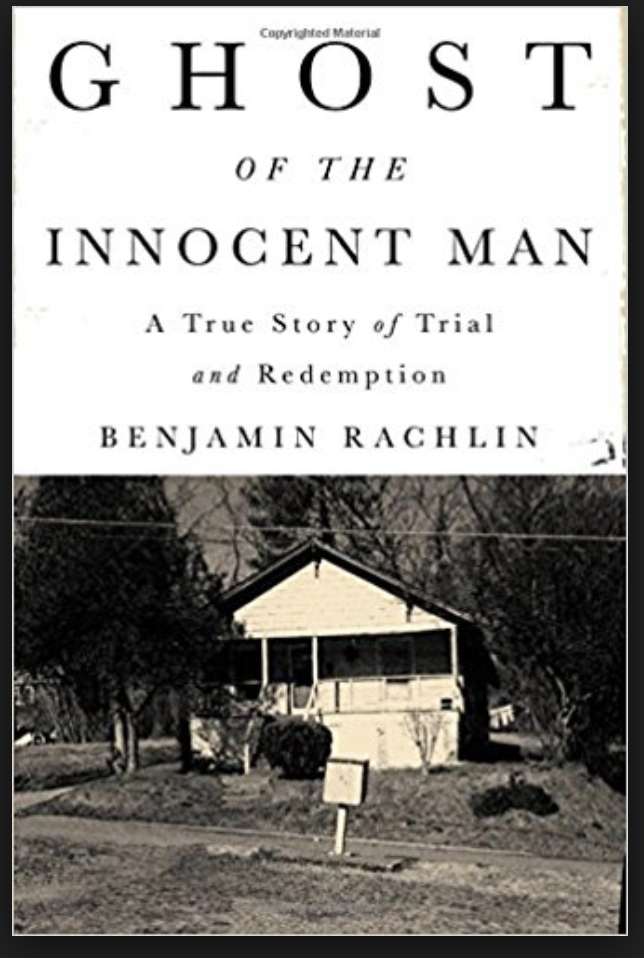October 28th, 2014 — 3:28pm
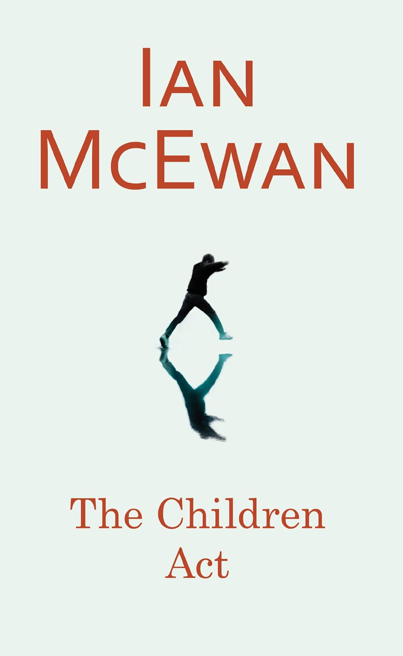 The Children Act by Ian McEwan– Mr. McEwan is a prize winning best selling author of more than 15 books. For his latest novel, he has chosen to write about an established British woman judge who sits on Family Court cases. She deals with many types of heart wrenching situations of broken marriages, custody disputes and other issues which often lead to delicate ethical dilemmas, and which are really quite fascinating in and of themselves. However, in this novel the good judge, frequently called, “ My Lady” is faced with a personal dilemma herself as her husband threatens their marriage by telling her that he wants to have an affair with a particular younger woman. It should be noted that this domestic situation is not the same one, which she confronts in her courtroom; nevertheless it has an impact on her and begins to intrude in her thoughts. She usually is able to shake them off and when she does focus on her work we are made privy to fascinating human dilemmas. There are Siamese Twins who have to be split with one to be destroyed so the other can live. There is the classical case of a teenager a few months short of his 18th birthday that has leukemia and requires a blood transfusion to save his life and put his disease in remission. Alas, both he and his parents are devout Jehovah Witnesses who believe that it is God’s will that one should never have infusion of blood. They firmly believe this even if the failure to so will almost certainly lead to a painful horrible death. In this case, there are repercussions, which will advance the story.
The Children Act by Ian McEwan– Mr. McEwan is a prize winning best selling author of more than 15 books. For his latest novel, he has chosen to write about an established British woman judge who sits on Family Court cases. She deals with many types of heart wrenching situations of broken marriages, custody disputes and other issues which often lead to delicate ethical dilemmas, and which are really quite fascinating in and of themselves. However, in this novel the good judge, frequently called, “ My Lady” is faced with a personal dilemma herself as her husband threatens their marriage by telling her that he wants to have an affair with a particular younger woman. It should be noted that this domestic situation is not the same one, which she confronts in her courtroom; nevertheless it has an impact on her and begins to intrude in her thoughts. She usually is able to shake them off and when she does focus on her work we are made privy to fascinating human dilemmas. There are Siamese Twins who have to be split with one to be destroyed so the other can live. There is the classical case of a teenager a few months short of his 18th birthday that has leukemia and requires a blood transfusion to save his life and put his disease in remission. Alas, both he and his parents are devout Jehovah Witnesses who believe that it is God’s will that one should never have infusion of blood. They firmly believe this even if the failure to so will almost certainly lead to a painful horrible death. In this case, there are repercussions, which will advance the story.
I personally find that Mr. McEwan uses excessive dialogue to explain and illustrate the emotional situations, which he has already clearly described. This includes his description of dramatic interactions between people and even the powerful effect of music which he spends pages describing. It is not that this book is excessively long, as it clearly is not. Nor is the book lacking emotional impact. Perhaps because the author has the ability to come up with so many riveting themes, that I frequently felt he did not need to dwell on points he had already made. I found myself imagining this story being acted out on the Broadway stage with a handful of great actors, which I suppose is a backhanded compliment to this novel.
Comment » | FL - Fiction Legal
October 28th, 2014 — 9:56am
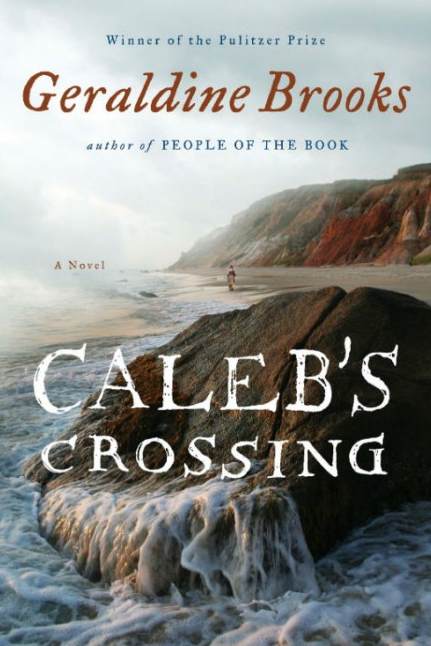 Caleb’s Crossing by Geraldine Brooks – Caleb is one of two Israelites who left Egypt and survived to see the Promised Land. Geraldine Brooks has given this name to a Native American who in her novel is befriended by a young girl who is from one of the new settlements in the New World. Their friendship and subsequent lives are the story of this book. It is a fictional account, not only of their relationship, but also of what it was like growing up in this New World colony in the mid 17th century, which is now known as Martha’s Vineyard. It shows the interactions of these settlers with the natives of this land who lived nearby. There actually was a Native American by the name of Caleb who not only lived during this time period but who was educated by the settlers and ultimately went on to be part of one of Harvard’s earliest graduating classes This transformation of Caleb who had to crossover from his tribal beliefs and receive a Christian education which led to attending at Harvard was an exciting adventure and the main storyline of this book. The author Geraldine Brooks captured the atmosphere and life style of this period. She does this by a well-researched description of the living conditions and societal roles of her characters. She also uses the language and grammar of that time which while understandable to the modern reader still requires some retreat to the dictionary (electronic one in my case) For example;
Caleb’s Crossing by Geraldine Brooks – Caleb is one of two Israelites who left Egypt and survived to see the Promised Land. Geraldine Brooks has given this name to a Native American who in her novel is befriended by a young girl who is from one of the new settlements in the New World. Their friendship and subsequent lives are the story of this book. It is a fictional account, not only of their relationship, but also of what it was like growing up in this New World colony in the mid 17th century, which is now known as Martha’s Vineyard. It shows the interactions of these settlers with the natives of this land who lived nearby. There actually was a Native American by the name of Caleb who not only lived during this time period but who was educated by the settlers and ultimately went on to be part of one of Harvard’s earliest graduating classes This transformation of Caleb who had to crossover from his tribal beliefs and receive a Christian education which led to attending at Harvard was an exciting adventure and the main storyline of this book. The author Geraldine Brooks captured the atmosphere and life style of this period. She does this by a well-researched description of the living conditions and societal roles of her characters. She also uses the language and grammar of that time which while understandable to the modern reader still requires some retreat to the dictionary (electronic one in my case) For example;
When the light faded the cold seeped through my clogs and set my chilblains a-throbbing, I returned to the house and found Solace, who had wakened from nap, mewling softly…
A good historical novel (which this one certainly qualifies) not only provides feasible facts and actions of the characters but also should examine important social and political themes of the times. The author accomplishes this requirement quite well. We witness the good intentions of this group of early settlers not only to trade and negotiate with but also to teach the Native Americans about their deeply held religious beliefs. We see how many of the Native Americans are impressed with the apparent power of prayer to the Christian God as they see these white worshippers being able to survive disease, which the Native Americans despite the prayers to their gods were not successful in doing. (This was probably because the Europeans had come to the New World with antibodies to Small Pox and other diseases). Some native leaders foresaw the ultimate complete loss of their land and way of life, which would occur, and tried to resist. We also are reminded of the subsequent wars between these two groups and the later discrimination towards the Native Americans on the part of the settlers. For example, despite Caleb’s great accomplishments as well as those of a few other Native Americans at Harvard at this time in the 1650s, it took a great many years before another Native American would attend Harvard.
Through this engaging story the author also examined the role of women in the culture of the new world settlers. It was the job of girls and women to arise early, draw the water, prepare and cook the food, work the fields, clean the clothes etc. Even in the most educated families where there were scholars and ministers, young girls were lucky if they learned how to read, let alone study languages and classic history which was quite valued by these people.
This was a captivating novel, which provided enlightenment about what life was like at this time for the people depicted in the story. It also provided an emotional experience for the reader as we could identify with the characters and appreciate their struggles, hope, aspirations and disappointments.
Comment » | FH - Fiction Historical
October 10th, 2014 — 11:50am
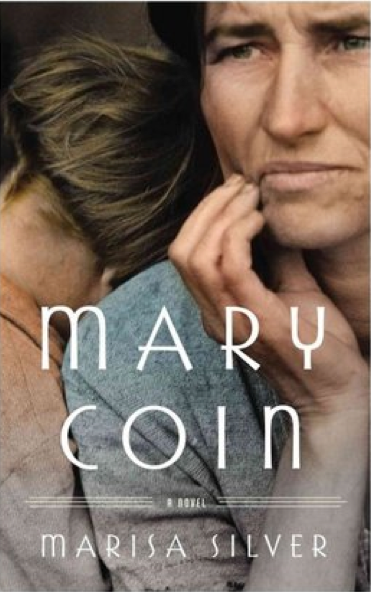 Mary Coin by Marisa Silver– It is a safe assumption, that just about everyone reading this review is familiar with the iconic photograph which is the book cover of the novel being reviewed. You probably know it was taken in California during the Great Depression, It has become known as the “The Migrant Mother.” But who are these people? Where did they come from, what was their life like and what was it like to live in those times? Marisa Silver the author of this novel was not content with just wondering about these things. She wanted to really understand what was going on. She obviously studied the history of this time and place, She created a story that goes beyond the picture but attempts to tell us about Florence Owens Thompson whom she names Mary Coin. She also tells us about the real photographer Dorothy Lange whom she gives the alias Vera Dare. With this latter character there actually have been a couple of biographies written over past 75 years, which could have, provided some important details to draw upon. There are no tell tale remnants of the main subject of the photo other than a letter that she wrote to a magazine complaining that she didn’t think it was right that the photographer should benefit from a personal image of her and her family. There is a third character created in this novel, which as far as I know is totally fiction. That is Walker Dodge, a college professor who studies cultural history by trying to find evidence of what people’s lives were really like in various time periods. Perhaps he is a stalking horse for the author. She does however take an imaginative poetic license in some of the plot that she develops about him.
Mary Coin by Marisa Silver– It is a safe assumption, that just about everyone reading this review is familiar with the iconic photograph which is the book cover of the novel being reviewed. You probably know it was taken in California during the Great Depression, It has become known as the “The Migrant Mother.” But who are these people? Where did they come from, what was their life like and what was it like to live in those times? Marisa Silver the author of this novel was not content with just wondering about these things. She wanted to really understand what was going on. She obviously studied the history of this time and place, She created a story that goes beyond the picture but attempts to tell us about Florence Owens Thompson whom she names Mary Coin. She also tells us about the real photographer Dorothy Lange whom she gives the alias Vera Dare. With this latter character there actually have been a couple of biographies written over past 75 years, which could have, provided some important details to draw upon. There are no tell tale remnants of the main subject of the photo other than a letter that she wrote to a magazine complaining that she didn’t think it was right that the photographer should benefit from a personal image of her and her family. There is a third character created in this novel, which as far as I know is totally fiction. That is Walker Dodge, a college professor who studies cultural history by trying to find evidence of what people’s lives were really like in various time periods. Perhaps he is a stalking horse for the author. She does however take an imaginative poetic license in some of the plot that she develops about him.
By following the life of Mary Coin we see what is was like in the Great Depression, especially among poor people but it is still difficult to get an emotional understanding of these times. How can a modern day reader empathize with a single mother of 3 children who working all day doing hard labor in a farm field, picking crops which requires that she be bent over most of the time? What if the jobs are scarce and she doesn’t get work? What kind of medicine is available for her kids at that time period and in the midst of poverty? How do you deal with pregnancy, childbirth or abortion in the 1930s in this setting? What do sexual favors mean if they help you get food for your children? How do relationships develop in this context?
The story also follows the life of Vera Dare. We meet her family, come to appreciate her life and childhood as well as the people in her life as an adult. Through the recounting of a speech that she made, we come to understand the early life of the photographer. We follow her to where she gets a job taking pictures for the government that would capture the life and poverty of that time. This is where she meets Mary Coin.
This book also deals with the question of what is a photograph? What does it mean to be the subject of the picture and is there really consent in such a setting? The picture we realize is one moment in time but in this situation it really does tell a deep meaningful story with just one click.
There is the unanswered question raised by the Florence Owens Thompson in the one letter that exists of her actual words as she challenges the idea that the photographer might have benefited from her plight. Ms. Lange the real photographer was working for the government and did not benefit directly from taking the picture. She obviously did so indirectly and this is part of her great legacy.
The iconic photograph has captured and preserved a moment in time as all pictures do. But because this one has reached and impacted millions of people, it takes on a special significance. It makes the numerous viewers want to understand what the people in it were experiencing at the time. Ms. Silver, the author extends the value of the picture by creating a story so we can know the lives of people of the time and place of the photograph. Like so many other historical novels, by reading it we have gained an insight and empathy about the subjects who are part of our humanity. Thus we are all richer for reading this book.
1 comment » | FH - Fiction Historical
October 7th, 2014 — 9:00am
 How We Heal and Grow: The Power of Facing Your Feelings by Jeffery Smith, M.D.
How We Heal and Grow: The Power of Facing Your Feelings by Jeffery Smith, M.D.
I was recently asked by my colleague and friend Dr. Jeffrey Smith, to write the Foreword for this new book that he has written. I was pleased to find it an excellent book. He offers a fresh and sensible way to look at how people develop dysfunctional patterns and facing feelings that have been avoided is the pathway to healing growth. He covers the full range of human problems from quirks to serous personality issues. He discussed the work of Freud, Mahler, Kernberg and many others including his own work. Interestingly the book is directed towards the lay public and I am sure will be received. However it really also belongs in the hands of therapists and any mental health professional who is involved with therapy. Dr. Smith has been teaching this subject to psychiatry residents and other psychotherapists for many years and is always very well received. He approaches the subject from a development al point of view. He points out how most of us have pockets of immaturity and how to outgrow them. Dr. Smith discusses how and why the minds resist change. One of the central themes of Dr. Smith’s explanations is the phenomenon of catharsis where our underlying raw unprocessed feelings emerge and lose their power over us and are transformed when we share them with a therapist in the context of connection and safety. He describes this process and how it brings about an almost immediate change to the pathological emotions. I tend to look at the need for catharsis as something that has to occur over and over again which we often refer to as working through process. We do both agree that catharsis is an ongoing part of therapy. While this therapeutic work does require the empathic presence of the therapist. Dr. Smith also examines how some of this work may be able to done singularly when the person is trained in mindfulness in the Yoga and Buddhist tradition. The range and scope of the book is quite wide. He includes discussion of anxiety symptoms, trauma and depression although I felt he was little light on this latter subject particularly in regard to the role of loss. There is fascinating discussion on the dynamics of Multiple Personality Disorder in which he is a one of the few therapists with significant experience treating patients with this condition. Dr. Smith also brings his rich experience in treating addiction into the book. He shares where dynamics and developmental experience is important and where the here and now social interaction is crucial. Included in the book is one of the best discussions of conscience and superego that I have ever come across. There is also and excellent section on the narcissistic personality and a description of how to understand a parent who had this condition and how to deal with important people in your life who have it. This is really a unique book that should have great appeal to therapists, students learning therapy and people interested in understanding their own emotional issues as well as those around them. I can also picture how this book may be very useful for people entering therapy, It will alert them to what to look for in themselves. It may very well facilitate the therapeutic process. In fact, I plan to give a copy of it to some patients who enter therapy with me. I am very pleased to conclude that Dr. Smith has made an outstanding contribution to our profession and to the education of the public.
Comment » | MHP - Mental Health/Psychiatry
 The Children Act by Ian McEwan– Mr. McEwan is a prize winning best selling author of more than 15 books. For his latest novel, he has chosen to write about an established British woman judge who sits on Family Court cases. She deals with many types of heart wrenching situations of broken marriages, custody disputes and other issues which often lead to delicate ethical dilemmas, and which are really quite fascinating in and of themselves. However, in this novel the good judge, frequently called, “ My Lady” is faced with a personal dilemma herself as her husband threatens their marriage by telling her that he wants to have an affair with a particular younger woman. It should be noted that this domestic situation is not the same one, which she confronts in her courtroom; nevertheless it has an impact on her and begins to intrude in her thoughts. She usually is able to shake them off and when she does focus on her work we are made privy to fascinating human dilemmas. There are Siamese Twins who have to be split with one to be destroyed so the other can live. There is the classical case of a teenager a few months short of his 18th birthday that has leukemia and requires a blood transfusion to save his life and put his disease in remission. Alas, both he and his parents are devout Jehovah Witnesses who believe that it is God’s will that one should never have infusion of blood. They firmly believe this even if the failure to so will almost certainly lead to a painful horrible death. In this case, there are repercussions, which will advance the story.
The Children Act by Ian McEwan– Mr. McEwan is a prize winning best selling author of more than 15 books. For his latest novel, he has chosen to write about an established British woman judge who sits on Family Court cases. She deals with many types of heart wrenching situations of broken marriages, custody disputes and other issues which often lead to delicate ethical dilemmas, and which are really quite fascinating in and of themselves. However, in this novel the good judge, frequently called, “ My Lady” is faced with a personal dilemma herself as her husband threatens their marriage by telling her that he wants to have an affair with a particular younger woman. It should be noted that this domestic situation is not the same one, which she confronts in her courtroom; nevertheless it has an impact on her and begins to intrude in her thoughts. She usually is able to shake them off and when she does focus on her work we are made privy to fascinating human dilemmas. There are Siamese Twins who have to be split with one to be destroyed so the other can live. There is the classical case of a teenager a few months short of his 18th birthday that has leukemia and requires a blood transfusion to save his life and put his disease in remission. Alas, both he and his parents are devout Jehovah Witnesses who believe that it is God’s will that one should never have infusion of blood. They firmly believe this even if the failure to so will almost certainly lead to a painful horrible death. In this case, there are repercussions, which will advance the story.
